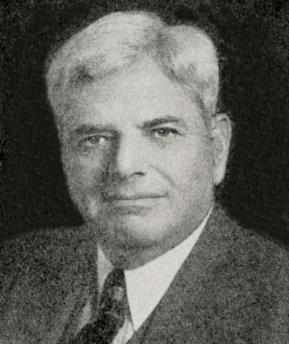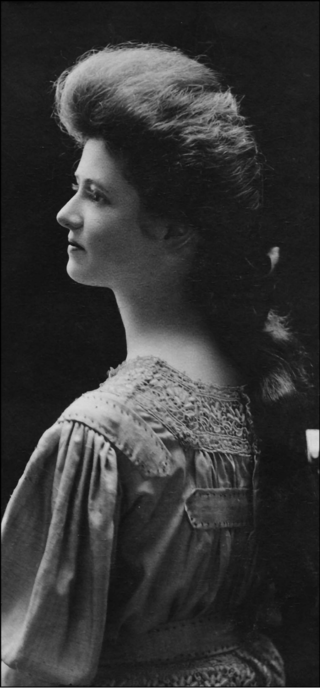Related Research Articles

Herpetology is a branch of zoology concerned with the study of amphibians and reptiles. Birds, which are cladistically included within Reptilia, are traditionally excluded here; the separate scientific study of birds is the subject of ornithology.

Laurence Monroe Klauber, was an American herpetologist and the foremost authority on rattlesnakes. He was the first curator of reptiles and amphibians at the San Diego Natural History Museum and Consulting Curator of Reptiles for the San Diego Zoo. He was also a businessman, inventor, and contributed to mathematics in his study of the distribution of prime numbers.

Karl Patterson Schmidt was an American herpetologist.
The American Society of Ichthyologists and Herpetologists (ASIH) is an international learned society devoted to the scientific studies of ichthyology and herpetology. The primary emphases of the society are to increase knowledge about these organisms, to communicate that knowledge through publications, conferences, and other methods, and to encourage and support young scientists who will make future advances in these fields. The programs of the American Society of Ichthyologists and Herpetologists are part of a global effort to interpret, understand, and conserve the Earth's natural diversity and to contribute to the wise use of natural resources for the long-term benefit of humankind.

Helen Beulah Thompson Gaige was an American herpetologist, curator of Reptiles and Amphibians for the Museum of Zoology at the University of Michigan, and a specialist in neotropical frogs.

Charles Mitchill Bogert was an American herpetologist, and curator of herpetology and researcher for the American Museum of Natural History.
The Society for the Study of Amphibians and Reptiles (SSAR) is an international herpetological society. It is a non-profit organization supporting education, conservation, and research related to reptiles and amphibians. Regular publications include the Journal of Herpetology and Herpetological Review. It is the largest international herpetological society, and is recognized worldwide for having the most diverse program of publications, meetings, and other activities.

Doris Mable Cochran was an American herpetologist and custodian of the American Natural Collection at the Smithsonian Institution in Washington, D.C., for many years.
Kenneth Lee Williams was an American herpetologist and author of books on the subject of snake biology and classification. Williams retired from teaching in Northwestern State University's biology department and received emeritus status in 2001. Williams is considered an authority on the milk snake and the herpetology of the Honduran Cloud Forest.

James Arthur Peters was an American herpetologist and zoogeographer.

Ilya Sergeyevich Darevsky was a Soviet Russian zoologist-herpetologist and a corresponding member of the Russian Academy of Sciences. During his career he described 34 species of amphibians and reptiles. Darevskia, a genus of Caucasian rock lizards, is named after him.
Martha L. "Marty" Crump is a behavioral ecologist in the Department of Biology and the Ecology Center at Utah State University who studies amphibians and reptiles. Crump was the first individual to perform a long-term ecological study on a community of tropical amphibians, and did pioneering work in the classification of variability in amphibian egg size as a function of habitat predictability. She has co-authoried one of the most popular modern herpetology textbooks, Herpetology (1997–2015) as well as the memoir In Search of the Golden Frog (2000) and a number of other books for both adults and children. In 1997, she received the Distinguished Herpetologist Award from The Herpetologists’ League.
Richard George Zweifel was an American herpetologist, who classified several species in the American Southwest and in Australia, including the rattling frog. Zweifel contributed immensely to the documentation of the nowadays Aspidoscelis costatus species. Out of the eight costata subspecies, Dr. Zweifel reported and named five of them. Zweifel worked at the American Museum of Natural History from 1954 to 1989, and was Herpetology Department Chairman from 1968 to 1980.
Robert ″Bob″ Powell is an American herpetologist. His main research interest is in the herpetofauna of the Caribbean.
Richard Bruce Bury, a pioneer in the study of herpetofauna, is an American conservationist, herpetologist, and natural historian and Scientist Emeritus of the United States Geological Survey. Bury, C. Kenneth Dodd, Jr. and Gary Fellers were the first to suggest widespread amphibian declines were progressing. In 1972, Bury became the first person hired by the United States Department of the Interior under the specific title of Herpetologist. In 2009, the American Society of Ichthyologists and Herpetologists (ASIH) made Bury the 11th herpetologist awarded the annual Henry S. Fitch Award for Excellence in Herpetology. Bury is a founding governing board member and executive editor of the journal Herpetological Conservation and Biology. For more than 30 years, Bury has studied herpetofauna ecology and conservation, including the effects of invasive species and wildfire on populations. Thanks in part to his efforts, herpetofauna are recognized as important indicators of ecosystem health.
Walter E. Meshaka Jr. is an American herpetologist and natural historian. He was the supervisory curator for the four National Parks in southern Florida from 1995 to 2000. In 2000 he became the Senior Curator of Zoology and Botany at the State Museum of Pennsylvania in Harrisburg, Pennsylvania. His research has been covered by Lawrence Journal-World, among other news outlets.
Joseph Thomas Collins, Jr. was an American herpetologist. A graduate of the University of Cincinnati, Collins authored 27 books and over 300 articles on wildlife, of which about 250 were on amphibians and reptiles. He was the founder of the Center for North American Herpetology (CNAH). He died while studying amphibians and reptiles on St. George Island, Florida on 14 January 2012. "For 60 years I was obsessed with herpetology," Joe Collins claimed.
C. Kenneth Dodd Jr., is an American herpetologist and conservationist. He earned his Ph.D. under Edmund D. Brodie Jr. from Clemson University in 1974. From 1976 to 1984 he worked in the research division of the U.S. Fish and Wildlife Service, then he transferred to the U.S. Geological Survey in 1984, where he remained until his retirement in 2007. He is currently Courtesy Associate Professor in the Department of Wildlife Ecology and Conservation, University of Florida and an Affiliate of the Florida Museum of Natural History. He has published over 200 papers, reviews and books. Much of his research focuses on turtle and amphibian ecology/conservation. He, along with R. Bruce Bury and Garry Fellers were the first to suggest widespread amphibian declines were progressing. He is a nationally recognized herpetologist.

Darrel Richmond Frost is an American herpetologist and systematist. He was previously head curator of herpetology at the American Museum of Natural History, as well as president of both the Society for the Study of Amphibians and Reptiles (1998) and the American Society of Ichthyologists and Herpetologists (2006). Four taxa are named in his honor: the toad genus Frostius, the tree frog Dendropsophus frosti, Darrel's Chorus Frog Microhyla darreli, and Frost's arboreal alligator lizard Abronia frosti.
Margaret "Meg" McBride Stewart was an American herpetologist, known for her research on the amphibians of Malawi, the Caribbean, and the United States. She was a professor at the State University of New York at Albany. She served as president of the American Society of Ichthyologists and Herpetologists and the Society for the Study of Amphibians and Reptiles. The puddle frog Phrynobatrachus stewartae was named in her honour.
References
- ↑ "About Us : About : Phoenix Herpetological Society". Phoenix Herpetological Sanctuary. Retrieved 2024-11-01.
- ↑ "About the Society". American Society of Ichthyologists and Herptetologists. Retrieved 2024-11-01.
- ↑ Drage, Jen. "About us". British Herpetological Society. Retrieved 2024-11-01.
- ↑ "About SSAR". Society for the Study of Amphibians and Reptiles. 2014-03-24. Retrieved 2024-11-01.